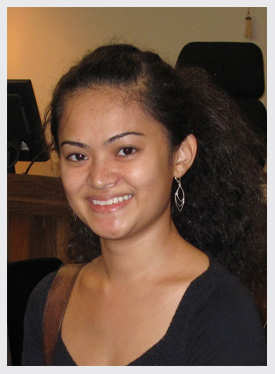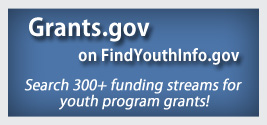Youth Voices: Razilee
You are here
Home ›
"I wanted to participate in a different kind of journey where I could experience and get a better understanding of strengths and hardships of communities first hand."
Razilee — AmeriCorps Member
We spoke with Razilee via email in April 2012.
Razilee is a 24-year-old originally from Los Angeles, California. After graduating from college in 2010, she spent ten months as a member of the AmeriCorps National Civilian Community Corps (NCCC). Razilee traveled the country as part of her work with NCCC, providing community service and responding to national disasters. She is currently serving a second year with AmeriCorps in the National Preparedness and Response Corps (NPRC), where she has been working at the American Red Cross, Southeastern Pennsylvania Chapter, in Philadelphia. She spends most of her time in the Youth Services Department as a facilitator for Red Cross Clubs and as a community educator, while also responding to regional and national disasters.
How did you learn about the NCCC and why did you join?
I graduated from college with a Bachelor’s [degree] in Urban and Regional Planning and really enjoyed learning about different communities, their needs, and how to work alongside them in creating safe and healthy environments. Before starting my career, I wanted to participate in a different kind of journey where I could experience and get a better understanding of strengths and hardships of communities first hand. I looked into various programs online and found AmeriCorps NCCC to be exactly what I was looking for. There were definitely some challenges, but it was a great experience that I am happy to have had.
What were your responsibilities with NCCC and what was one of your most memorable projects?
I worked and lived with a team of ten young adults and we provided services to communities in various capacities that included building trails at state parks, weatherizing homes for low-income families, helping youth in an after school program, and assisting in disaster recovery. Because our range of services was so broad, each project required different tasks, but no matter what we were doing or where we were, I always had to make sure that the team did community mapping. This entailed the team going out into the community and taking note of what obstacles community members might face and what resources were available to them.
One of my favorite projects was getting to work with the Boys & Girls Club of Brazoria County, Texas. I was able to assist with the Better Educated Students of Tomorrow (BEST) program and develop engaging lessons for middle school-aged students. I didn’t have much experience working with youth and was worried how things would work out. I was working with middle school students and it seems like that's the time when students are trying to fit in, but also trying to distinguish who they are among their peers. In a few instances, students would pick on each other, but many times, once they got into smaller groups or worked with partners, their attitudes seemed to change. It wasn't always possible, but I would try to get everyone into smaller groups and find activities to have them interact and develop an understanding about each other through team building activities and games. At the end of the project, I realized how I was able to serve as a positive role model to these students and how adults can contribute to successes of individuals.
During the end of my term with NCCC, I participated in disaster relief efforts and saw the devastating effects a storm or disaster can have on an entire community. I wanted to continue working in this area and was pleased to find that the American Red Cross worked in disaster relief as well as youth involvement. I felt this experience tied together some of the best aspects of my NCCC experience.
I’ve learned that there isn’t a blanket program or teaching style that can be used in all communities. It’s important to recognize the particular concerns or needs of a group and take special care to address them. One group may respond better to a discussion-based lesson and another may prefer more of a lecture. Either way, it’s important to know when you aren’t being the most effective and to quickly find a better way to get your message out. I think the biggest impact you can make on a community is showing that you’re genuinely interested in their questions and concerns. By doing this, you’re able to better understand them and tailor your message to their situations.
I would say to listen to the communities. That way you’re actually working with them. One of the great things about being able to go into the places you’re working with is you aren’t just giving information to them, but you become a resource for them. Something that I’ve found to be helpful is to let a community group know what will be happening in the very beginning of working with them. If you start off by saying what you’ll be talking about, it lets community members know what to be looking out for, especially if they have any specific questions. I’ve learned that a concern from at least one community member could also be a legitimate concern for everyone.

Subscribe to our newsletter for information on funding, events, publications, and more.

Tricia discusses what helped her survive despite tremendous odds. (video)
Marlon describes how a training program and afterschool photography class helped him grow. (video)
Chardae credits her mentor with helping her overcome life's challenges. (video)
Check out Bringing Learning to Life, a video describing the benefits of service-learning. (video)

Map My Community is a tool designed specifically to assist you in locating resources in your community to help you build and strengthen your youth program. Get ideas for new partnerships, identify gaps in your community, and learn about resources to avoid duplication of effort.















